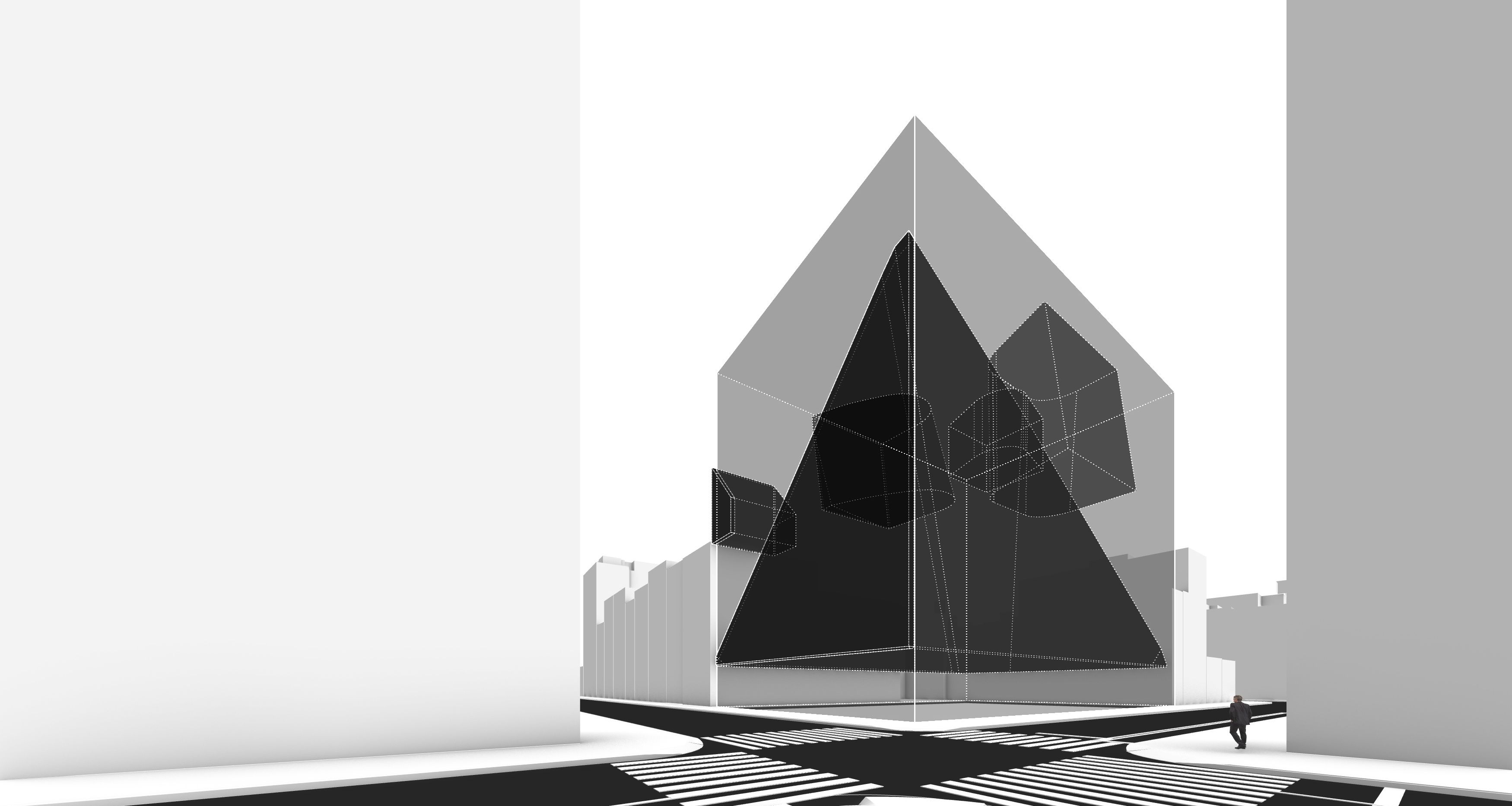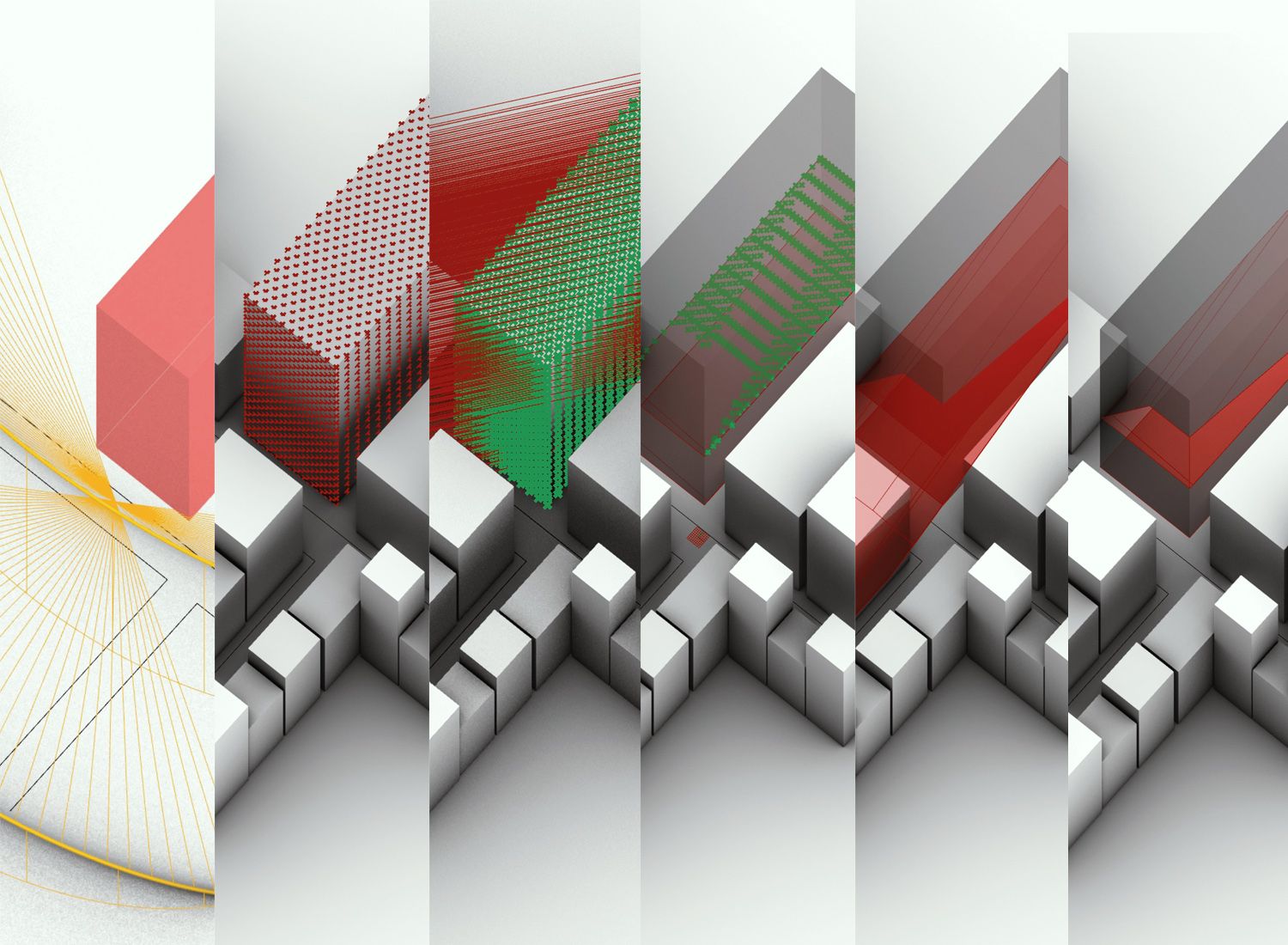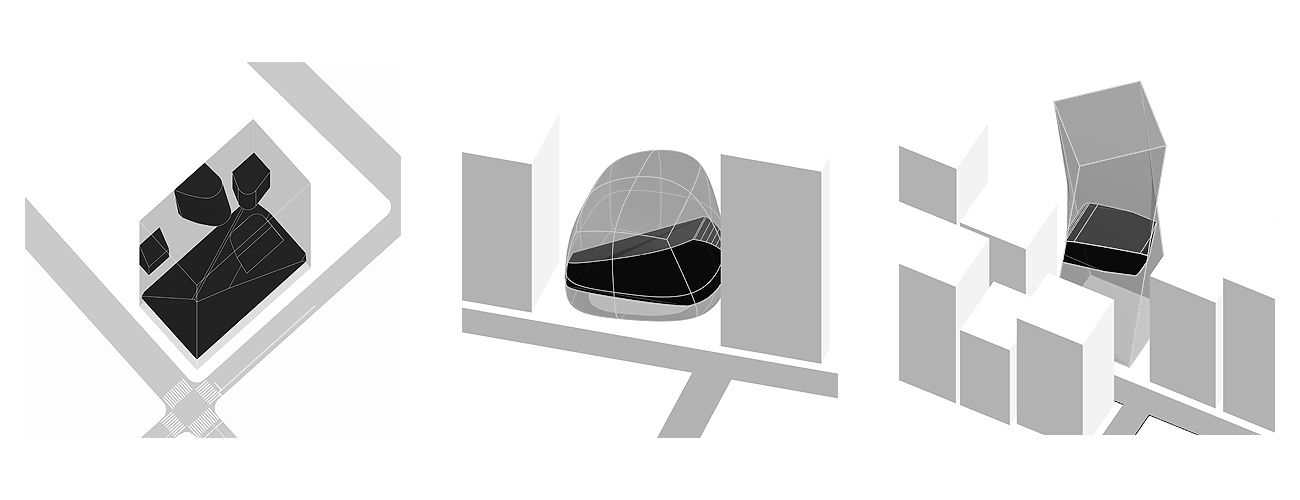Solar Space
Solar Context as Catalyst for Form Finding

Solar Space investigates a process of form finding, iterating on a schematic building massing using parameterized sun vectors. Specifically, using precise sun angles in a day from three different periods; winter solstice, fall equinox, and summer solstice, in order to find the intersections of sunlight and a schematic building massing. Moreover, the process investigates maximizing sunlight for any given planar surface within the massing, and visualizing the solar volume created in order to maximize the target surface. With this, the project showcases the use of parametrized daylight vectors as a means to generate form that is both contextually and environmentally sensitive, as well as architecturally expressive of the two. The motivation for the project is to explore the possibilities of dynamic three-dimensional solar analysis. Dynamic in the sense that the vector data changes with regard to time- This done in comparison to traditional static and two-dimensional analysis of sun vectors typically seen in processes for sun shading and other light sensitive architectural processes. Moreover, the acute motivation for the project is to explore form finding through precise parameters without using any randomization data; so that architecture may emerge and be expressive of the acute peculiarities of context and environment.

